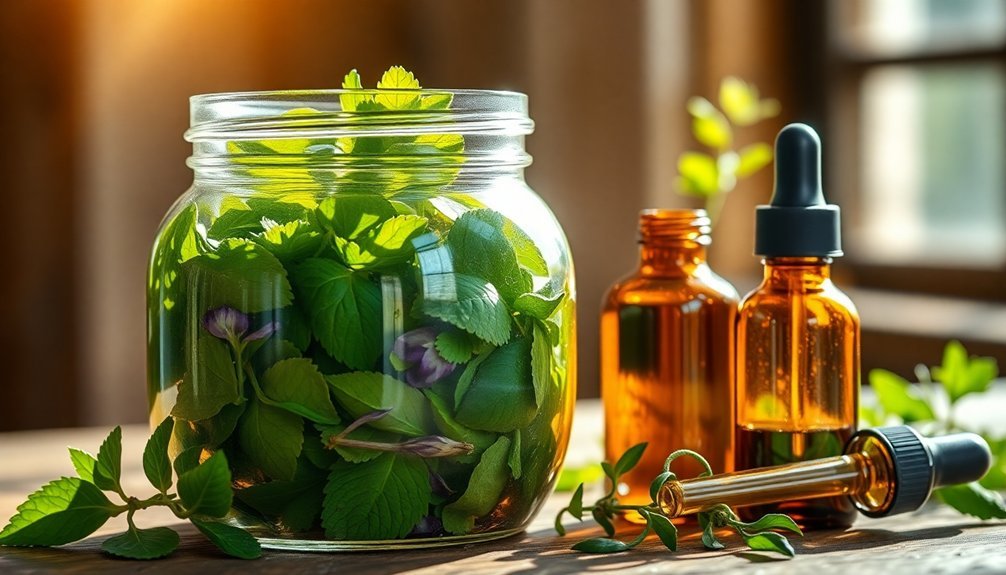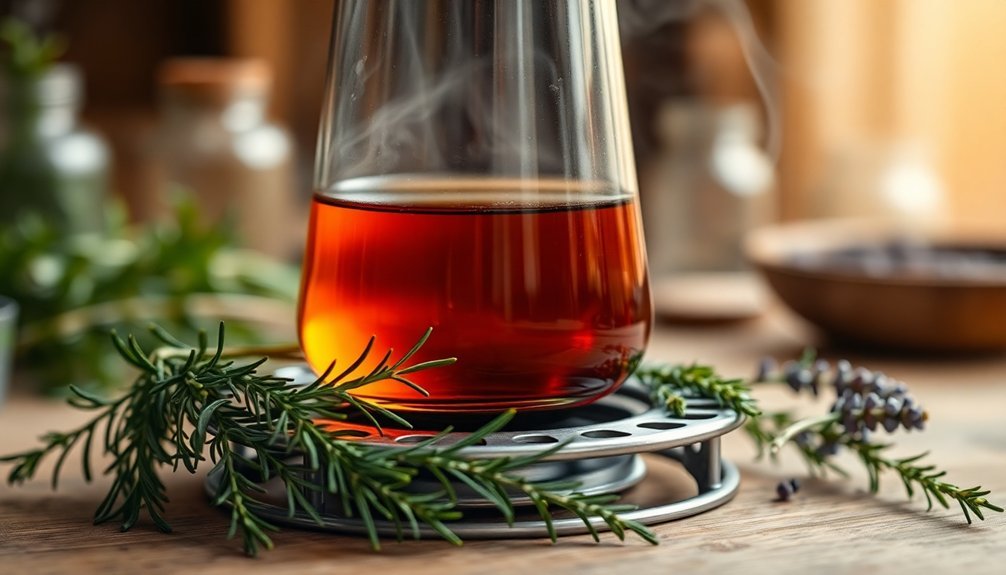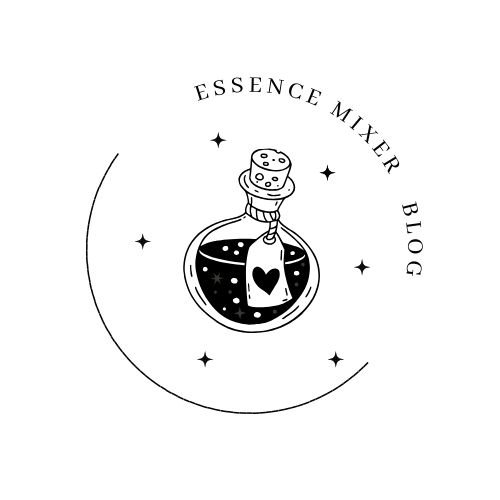You'll find three proven alcohol extraction methods for creating potent botanical oils: cold ethanol extraction, warm alcohol-oil infusion, and double extraction. The cold method uses chilled ethanol at -20°C to -40°C for clean extracts. Warm infusion combines high-proof alcohol with carrier oils below 115°C. Double extraction merges both approaches for maximum potency. Each technique offers unique benefits, and exploring their details will help you choose the perfect method for your needs.
Basic Cold Ethanol Extraction: A Traditional Approach

Cold ethanol extraction stands as a cornerstone technique in botanical oil processing.
You'll need to start by carefully selecting and drying your plant material, then grinding it finely to maximize surface contact with the solvent. This preparation step is vital for achieving ideal results.
Next, you'll cool your ethanol to temperatures between -20°C and -40°C using specialized chillers. These ultra-low temperatures are essential because they prevent the extraction of unwanted components like chlorophyll and waxes while preserving heat-sensitive compounds.
When you mix the chilled ethanol with your prepared plant material, maintain a ratio of 4:1 to 10:1 ethanol-to-biomass. The cold solvent will effectively dissolve the desired compounds while leaving behind unwanted elements, resulting in a cleaner extract. The process allows for solvent recovery through distillation, making it both cost-effective and environmentally sustainable.
Warm Alcohol-Oil Infusion: The Intermediate Method
While cold ethanol extraction excels at preserving heat-sensitive compounds, the warm alcohol-oil infusion method offers a practical alternative for home-based botanical oil production.
You'll start by grinding dried herbs and moistening them with high-proof grain alcohol, using about ½-1 oz of alcohol per ounce of herbs. After mixing until crumbly, let the mixture rest for 24 hours with parchment paper between the jar and lid.
Next, blend the herb-alcohol mixture with 6-8 ounces of your chosen carrier oil until warm. You can enhance extraction by heating the mixture in a double boiler below 115°C. The alcohol intermediary method creates oils with reduced microbial growth compared to traditional infusions.
Strain through cheesecloth or unbleached coffee filters, then store in an amber glass jar. This intermediate method produces more vibrant, potent, and shelf-stable oils than traditional cold infusion techniques.
Double Extraction Using Alcohol and Heat

To achieve maximum potency in botanical oil extracts, the double extraction method combines both alcohol and heat processing.
You'll start by mixing your ground herbs with quality alcohol like vodka or food-grade ethanol, letting them steep for 24 hours in a sealed container stored in a dark place.
This technique has been proven effective through 13,000 years of history with alcohol-based extractions.
Next, you'll add 6-8 ounces of carrier oil to your herb-alcohol mixture and blend until it's slightly warm.
Transfer this blend to a double boiler and heat gently at 78°C to evaporate the alcohol while preserving the active compounds. This heating process enhances extraction efficiency and reduces alcohol content.
Finally, strain your mixture through filter paper to remove solids. If needed, perform winterization by mixing with ethanol at low temperatures to remove waxes.
Store your finished extract in a dark container.
Frequently Asked Questions
How Long Can Botanical Extracts Be Stored Before They Lose Potency?
You'll find that most botanical extracts last 2-5 years when stored properly, but they'll gradually lose potency over time. For best results, keep them in dark glass containers under cool, controlled conditions.
Can I Reuse the Ethanol From Previous Extractions for New Batches?
Yes, you can reuse ethanol from previous extractions, but you'll need to properly filter and monitor its quality. It's cost-effective and eco-friendly, though you should watch for any carried-over compounds affecting new batches.
Which Botanicals Should Not Be Extracted Using Alcohol-Based Methods?
You shouldn't use alcohol extraction for plants high in mucilage like marshmallow root or slippery elm. Also avoid it with delicate aromatics that need steam distillation, as they'll lose their volatile compounds.
What Safety Precautions Should Be Taken When Working With High-Proof Alcohol?
You'll need proper ventilation, fire-safe equipment, and PPE including respirators and chemical-resistant gloves. Keep ignition sources away, don't exceed 40% ABV, and always work with a partner for safety.
How Can I Test the Final Extract for Purity and Concentration?
You can test your extract by using a refractive index meter, checking solubility in water, and evaluating color and aroma. For precise measurements, consider sending samples to a professional testing laboratory.
In Summary
You've now learned three reliable methods for extracting botanical oils using alcohol. Whether you choose the gentle cold extraction, warm infusion, or double extraction technique, you'll be able to create your own herbal tinctures and oils at home. Remember to always use food-grade alcohol, maintain proper safety measures, and label your extracts clearly. Start with small batches until you're comfortable with the process.





Leave a Reply